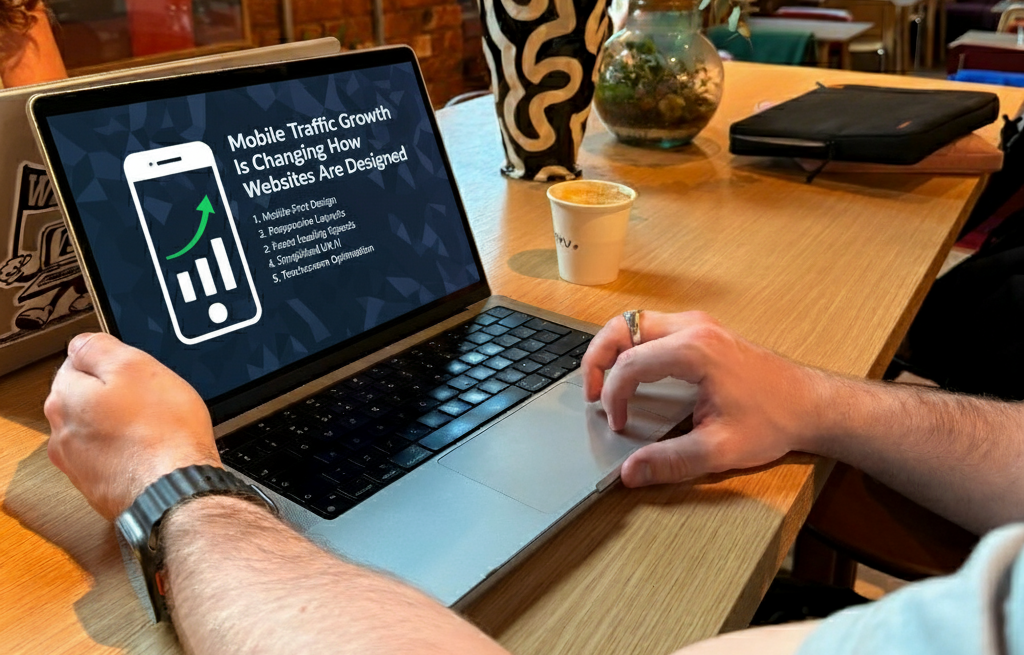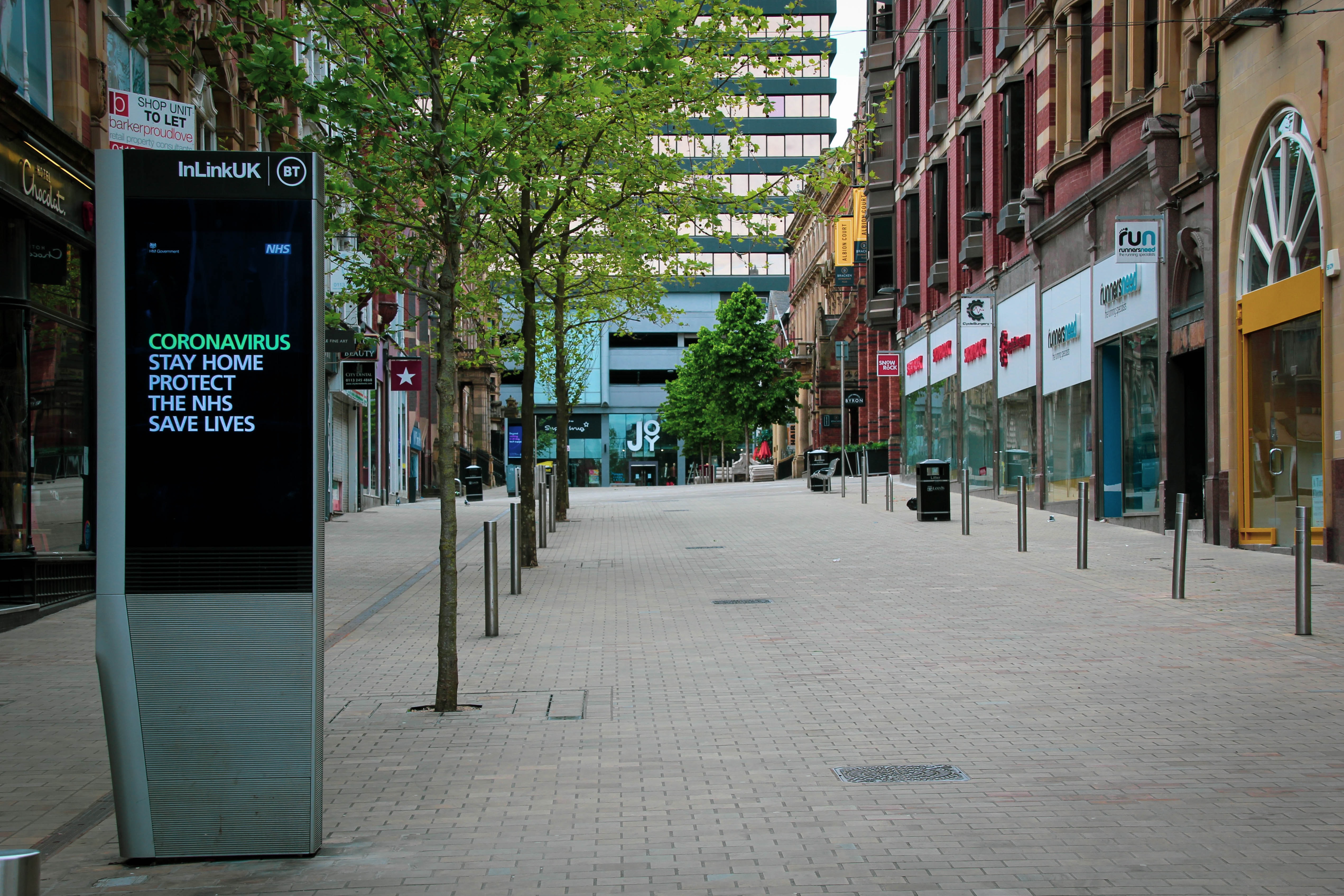Mobile devices now account for over 63% of global web traffic, reshaping how websites are designed, optimised, and experienced. This shift isn’t just a trend; it’s a structural change in user behaviour. For businesses investing in mobile web design, the message is clear: mobile-first isn’t optional, it’s foundational.

Mobile-First vs Mobile-Only: Strategic Divide
The mobile-first approach prioritises mobile usability from the outset, ensuring layouts, navigation, and content are optimised for smaller screens before scaling up to desktop. In contrast, mobile-only design focuses exclusively on mobile users, often used for apps or mobile-specific platforms.
For most UK businesses, a mobile-first approach offers the flexibility to serve both audiences while meeting Google’s mobile-first indexing standards, a key factor in SEO visibility and mobile site performance.
Responsive Frameworks and Performance Benchmarks
Responsive design frameworks, such as Bootstrap, Tailwind, and CSS Grid, remain critical for adapting layouts across various devices. But performance is just as important as flexibility. According to recent benchmarks:
53% of users abandon sites that take longer than 3 seconds to load on mobile
Mobile bounce rates are significantly higher on non-optimised sites
Conversion rates improve with thumb-friendly navigation, fast load speeds, and content clarity
Tools like Google’s Mobile-Friendly Test and Lighthouse audits help developers assess mobile optimisation and mobile UX in real time.
Mobile Usage and Conversion Trends
Recent data shows that:
Mobile traffic now exceeds desktop across all major regions, including Europe and North America
Mobile devices drive 44.2% of all U.S. retail eCommerce sales in 2025
Cart abandonment rates on mobile remain high (70–98%), highlighting the need for streamlined checkout flows and performance tuning.
These figures underscore the importance of mobile usability and conversion-focused design, especially for service-led businesses and e-commerce platforms.
What It Means for UK Businesses
For SMEs and agencies in Manchester, the rise of mobile traffic presents both challenges and opportunities. Investing in affordable web design in Manchester that prioritises mobile performance can lead to stronger engagement, better SEO rankings, and improved conversion rates.
Whether launching a new site or refreshing an existing one, mobile-first thinking should guide every decision, from layout and load speed to content hierarchy and call-to-action placement.
Frequently Asked Questions About Mobile Web Design and AI
How has the rise of mobile devices transformed website development?
Mobile usage has shifted design priorities toward speed, simplicity, and accessibility. Developers now focus on mobile UX, responsive layouts, and performance tuning to meet user expectations across devices.
What is the 3-second rule in web design?
It refers to the critical threshold for page load time; if a mobile site takes longer than 3 seconds to load, over half of users will abandon it. This benchmark drives mobile optimisation and performance-first design strategies.
How are mobile websites designed?
Mobile websites are typically built using responsive design frameworks that adapt to various screen sizes and orientations. Key principles include touch-friendly navigation, compressed assets, and prioritised content flow for smaller screens.
How much of website traffic is mobile?
As of 2025, mobile devices account for over 63% of global website traffic, with smartphones leading the shift. This dominance has made mobile-first approaches the standard in modern web development.
Why is mobile-first design important in modern web development?
It ensures that websites are optimised for the majority of users from the outset. A mobile-first approach enhances usability, supports SEO by adhering to Google’s indexing standards, and improves overall mobile site performance.
How is AI transforming web design?
AI is streamlining workflows by automating layout generation, content suggestions, accessibility checks, and performance audits. It’s also improving mobile usability through predictive design and real-time optimisation.
Is AI replacing web design?
Not entirely. While AI tools assist with design tasks, human strategy, creativity, and brand alignment remain essential, especially for businesses seeking tailored mobile web design and strategic positioning.
Which AI tool is best for web development?
Popular tools include Wix ADI, Framer AI, and ChatGPT-powered plugins for code generation and layout planning. The best choice depends on your goals, from rapid prototyping to full-scale responsive design builds.
Can AI help design a website?
Yes. AI can assist with wireframes, colour palettes, content structure, and even generate code. It’s especially useful for small businesses seeking affordable web design in Manchester or quick mobile-ready prototypes.
Need Help Optimising for Mobile?
At The Social Bay, we help UK businesses stay ahead with strategic web design in Manchester, responsive frameworks, and mobile-first UX. From mobile optimisation to performance audits, we tailor every build to meet today’s mobile demands.
hello@thesocialbay.co.uk
07441 918230
Facebook | Instagram | TikTok
Let’s make your site mobile-ready and conversion-strong.








